
All Eyes on Artemis
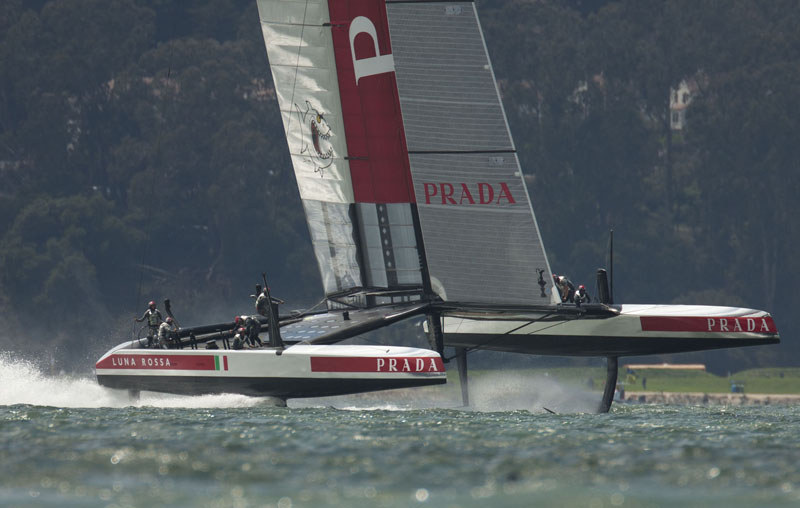
Artemis Racing team members have been on an emotional roller coaster this week. Monday night, they undoubtedly felt tremendous anxiety about the next day’s Louis Vuitton Cup Semi-Final, having had fewer than 10 days of practice on their new warhorse, Big Blue. Tuesday, they felt the elation of having won the start, completed the race without incident, and held their opponent, Luna Rossa Challenge, to only a two-minute victory. (Luna Rossa lost to Emirates Team New Zealand in a previous LVC Round Robin race by seven minutes.)
Wednesday, in race two of the Semis, the team — headed by skipper Iain Percy and helmsman Nathan Outtridge — put in another fine effort worth crowing about. Although they lost by two minutes, six seconds, they won the start again and showed impressive speed while beating upwind and reaching.
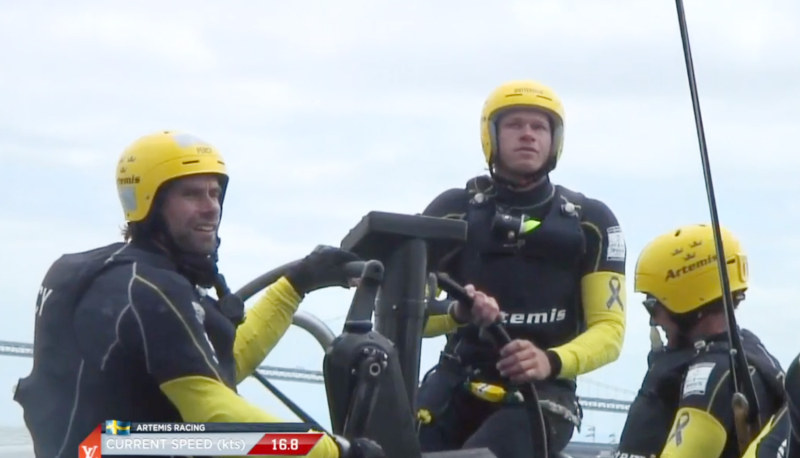
During yesterday’s day off — and, indeed, this morning — the Artemis crew probably has been dealing with a different set of emotions, as the cold reality hits them that if they don’t pull off a win in today’s Semi (1:15 p.m.), they’ll be down by three in this best-of-seven series, meaning they would have to sweep the last four potential races — a very difficult scenario to imagine.
That said, any number of wild cards could be thrown into the mix, not the least of which is a serious gear failure or structural breakdown. Already this week, a portion of Luna Rosa’s wing failed, causing a crewman to go aloft shortly before Tuesday’s race. That said, we’re certain that the Italian-backed Luna Rossa team is more pumped up than ever today, intent on protecting their lead in the Semis. And while they didn’t look so impressive in early races against the Kiwis, they are obviously steadily improving, as their time around the course Wednesday was the fastest of all race efforts thus far: 43m, 20s — 32 seconds faster than the Kiwis on a slightly shorter course.
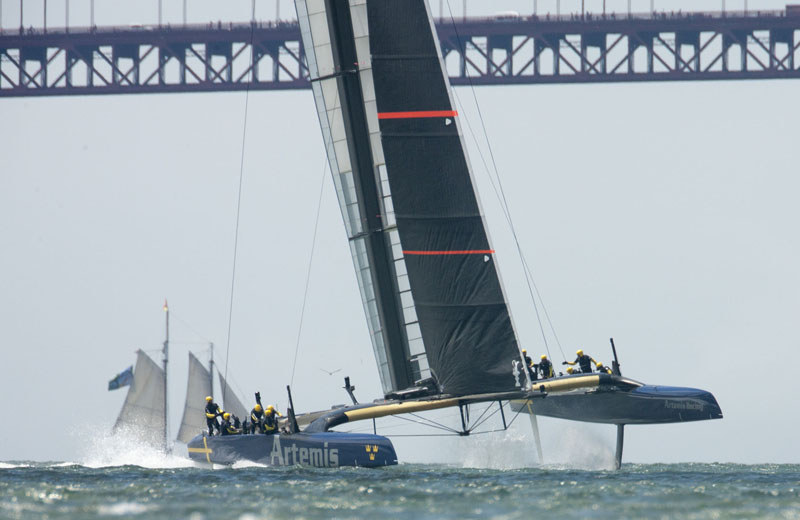
Bottom line: AC 34 excitement is definitely building. Because today’s race will air this afternoon on NBC Sports Network (4-6 p.m. PT), it will not be available to view live on the AC YouTube channel. Live action in real time can be viewed on huge screens in both the AC Village (Marina Green) and AC Park (Piers 27&29), with live commentary. Blow-by-blow reporting can also be heard on VHF 20. You can also follow the action in animation on the America’s Cup app or via Virtual Eye. See the AC 34 website for more.
Whales on the West Coast
Once thought doomed to extinction, whale populations that travel up and down the West Coast are now abundant again (although still officially “endangered”). Sadly, though, both ships and pleasure craft occasionally collide with cetaceans in near-shore waters.
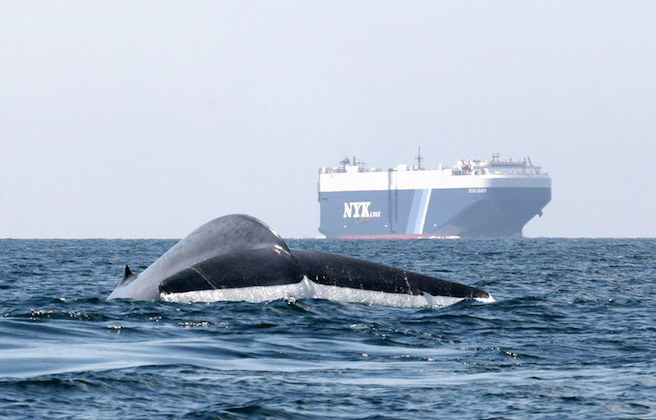
Since 1988 more than 30 whales of various species have been confirmed killed by ships near San Francisco Bay, and it is believed that those recorded strikes account for only a small fraction of all strikes near the Bay Area. The International Whaling Commission has documented hundreds more. Meanwhile the development of a new Whale Spotter app for tablets and smartphones may soon have a positive impact on this problem. Now being developed, and soon to be released via the iTunes Store, the app is intended to let ‘citizen scientists’ keep track of whale sightings, and share their data with the scientific community. The results of this . . . dare we call it crowd-sourced research . . . is expected to be a great benefit to researchers in confirming cetacean travel patterns and affecting related policies.
We haven’t seen the app on the site yet, but if it is released before this fall’s southbound migration to Mexico, it could be a benefit to West Coast sailors also. Off the top of our heads we can recall at least three times in recent years when sailboats collided with whales on Mexico’s west coast.
Meanwhile, in Tonga
Meanwhile, on the other side of the world, Will and Sarah Curry of the Vancouver, BC-based Beneteau First 405 Hydroquest recently had an up-close-and-personal look at a group of humpback whales during their visit to Tonga.
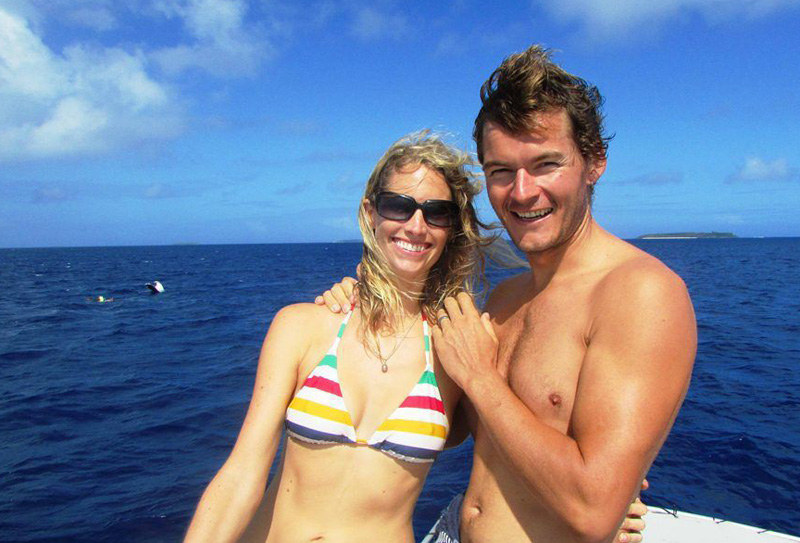
© Latitude 38 Media, LLC
"Tonga is one of the only places in the world where you can (legally) swim with humpback whales," writes Sarah, "so the first thing we did upon arrival in Neiafu was to arrange a tour." Needless to say, it was an amazing experience.
As author Sylvia Fox explains in the Tonga article which appears in the August edition of Latitude 38, "You need a Tongan guide (by law) and the swimming is tightly controlled. From June to November, the gentle humpback whales from the Southern Hemisphere head to the warm Tongan waters to raise newborn calves until they are strong enough to make the migration home.
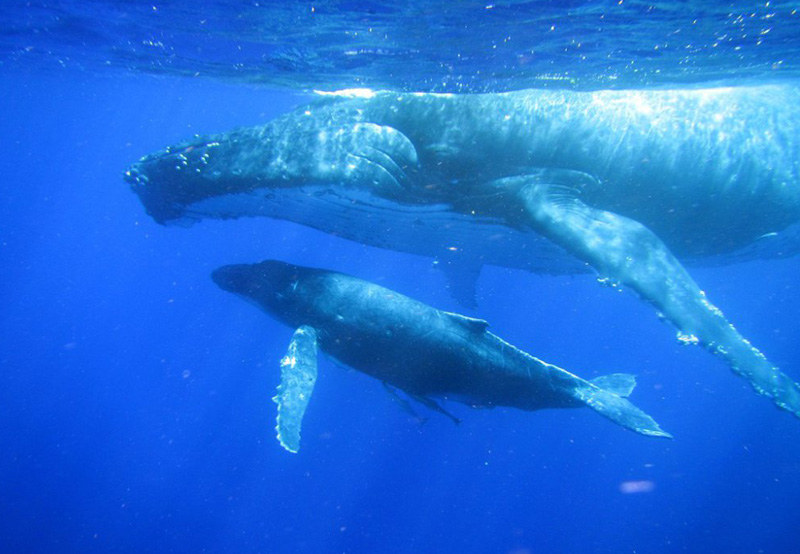
© Latitude 38 Media, LLC
"Whale lovers from around the world make it a destination, flying in to Vava’u to spend multiple days in the water. It’s a life-changing experience. Throw on a mask, snorkel and fins and jump in the water with a 50-foot long humpback female, and usually a 10- to 15-foot frolicking calf. Calves are generally inquisitive so the challenge is to stay the mandatory distance from the mammals. But you’re always being watched by the mother and sometimes a male sentry whale. Be sure to listen underwater. Whale songs are clear, loud and amazing. And underwater cameras are a must."
Needless to say, if you intent to sail the South Pacific in the coming years, we’d highly recommend visiting Vava’u, and splurging on a swim-with-the-whales excursion.
